You may not find this terribly rewarding unless you're included here, so this is a good time for casual and random browsers to turn back before they get too caught up in the sweep and majesty of the proceedings and can't let go.
There was a time when we could leap into the car and drive an hour over the Grand Saint Bernard for another visit to Italy -- 3, 4, 5 times a year. These days it's a lot more complicated, and more expensive, of course.
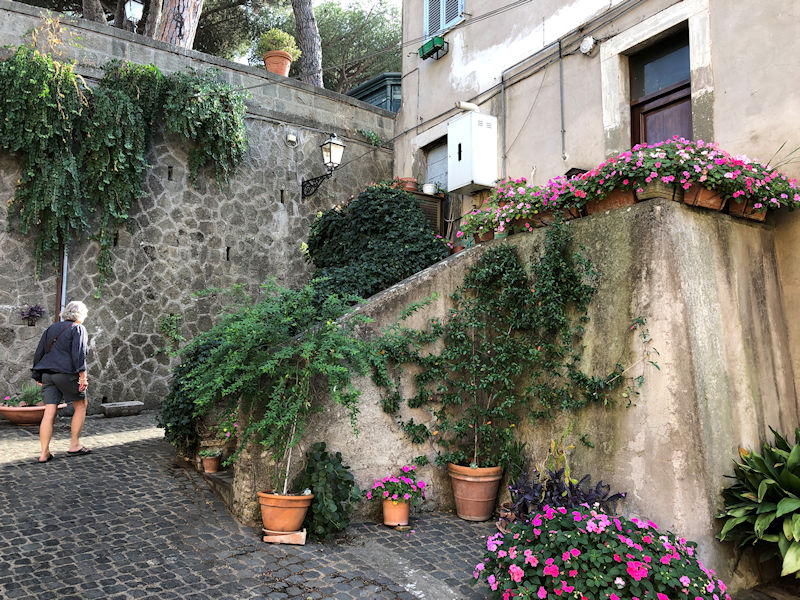
It's our second day here, and we might as well find out what all this Papal Palace excitement is about.
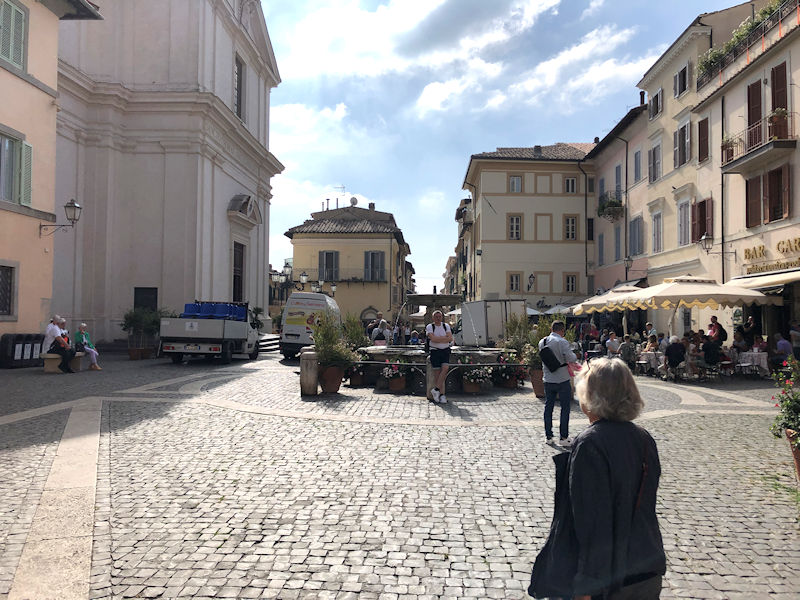
Through the gates up to the Piazza della Libertà, and now . . .
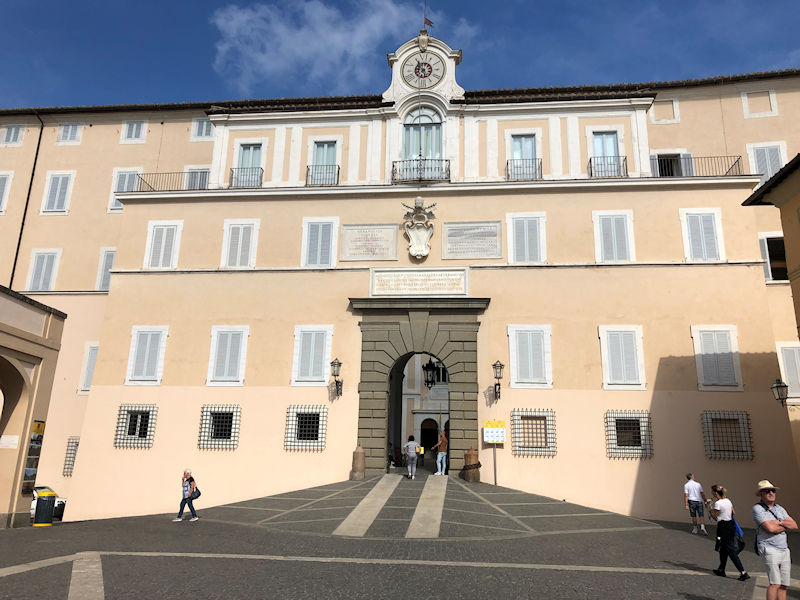
. . . for the Papal Palace tour.
Archaeological discoveries place early inhabitants at this site from the mid-2nd millennium BC, and this region of the Alban Hills over time became a suburban getaway for many of the Roman patrician families, with much of the area becoming an imperial property, frequented by Tiberius, Caligula, and Nero. It was the Emperor Domitian (r. AD 81-96), however, who built an enormous resort villa all along the crater rim here, facing toward both the lake to the east and the sea to the west. (The Appian Way passes by at the bottom of the hill and the emperor's grand villa would have been a remarkable sight.)
It was mostly abandoned by the late 2nd century AD, though, and when Septimius Severus built a great legionary fortress, called Castra Albana, for his Legio II Parthia in 197 in what is now the nearby town of Albano Laziale, Domitian's grand establishment became a quarry for building materials for the legionaries' families.
A fortification was built here in the 12th century, evidently by a ducal dynasty of Genoa (probably called the Gandolfi), and it was later owned by the important Roman aristocratic family the Savelli, who in turn sold it to the Apostolic Camera in 1596. That castle was superseded by the present palace when in 1626 Pope Urban VIII Barberini (r. 1623-1644) commissioned the architect Carlo Maderno to take the work in hand; since then, about half of the succeeding popes have used the place as a summer residence and retreat (except between 1870 and the Lateran Treaty of 1929) until in 2013 the new Pope Francis decided to evolve the building and gardens into a museum for the public, which was inaugurated in 2016.
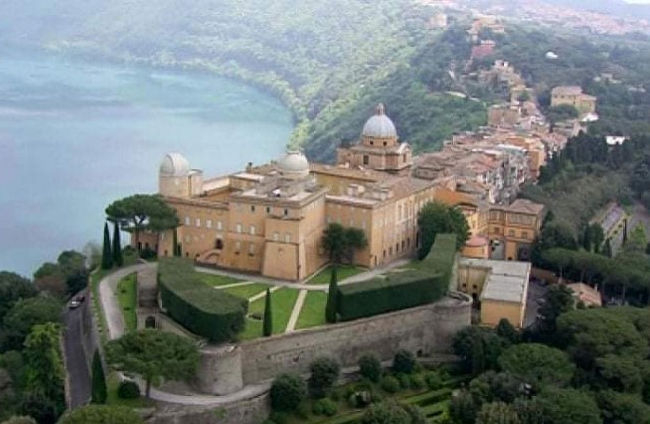
This photo, borrowed from Google Maps, illustrates the relationship between the main palace building (with the two domes of the papal astronomical observatories), the larger dome of the St Thomas of Villanova church over the main piazza, and the village extending away along the ridge, with Albano Laziale in the far background. The papal gardens, built among remains of Domitian's villa, stretch along below the borgo off the right side of the photo.
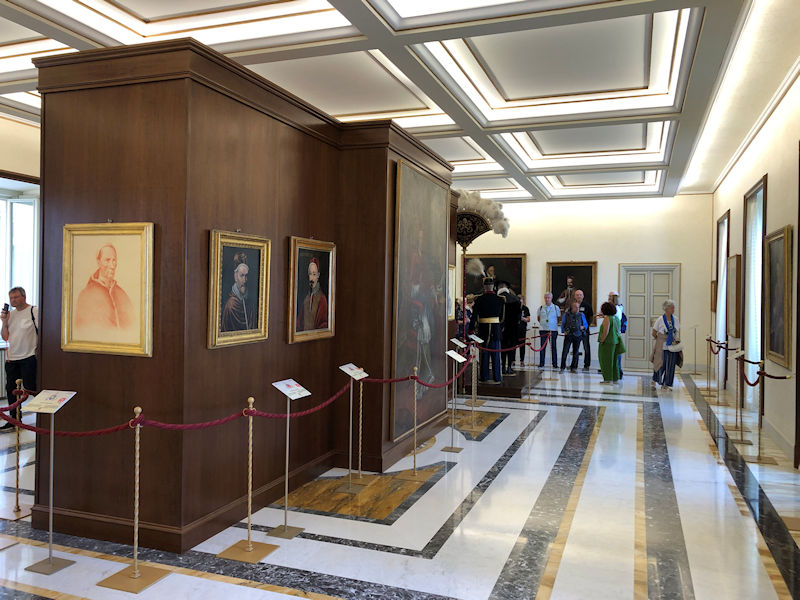
The 17th century palace tour extends down hallways lined with putative portraits of the long line of popes (which unless one is a fervent Roman Catholic can be fairly uninspiring). A few drew our interest, like . . .
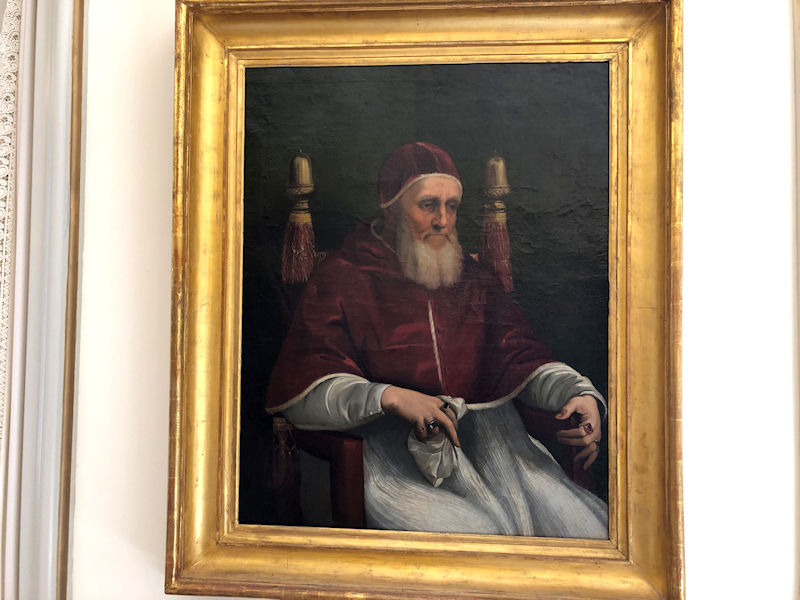
. . . this one, the classic portrait of Julius II della Rovere (r. 1603-1613), the 'Warrior Pope', always recognized by his grotty beard in Raphael's painting (he only wore a beard for 10 months in 1511-12, to mourn the temporary loss of Bologna to the French army).
Most if not all of the painted portraits we're viewing here are copies -- this, e.g., is one of many copies of Raphael's original work, which until 1970 was thought to be the one in the Uffizi in Florence but is presently agreed to be the one in the National Gallery in London.
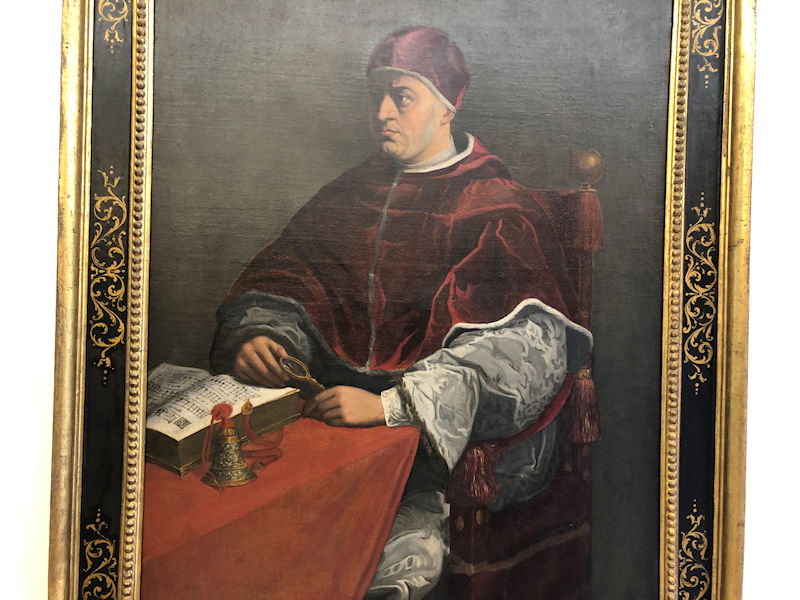
And this is the central portion of Raphael's portrait of Pope Leo X Medici (r. 1513-1521), and the original for this one is indeed in the Uffizi.
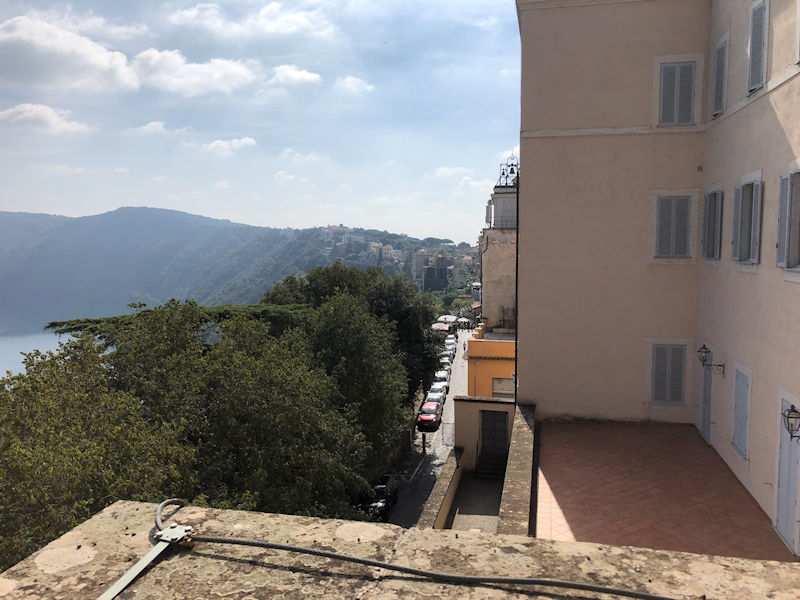
The view from the palace
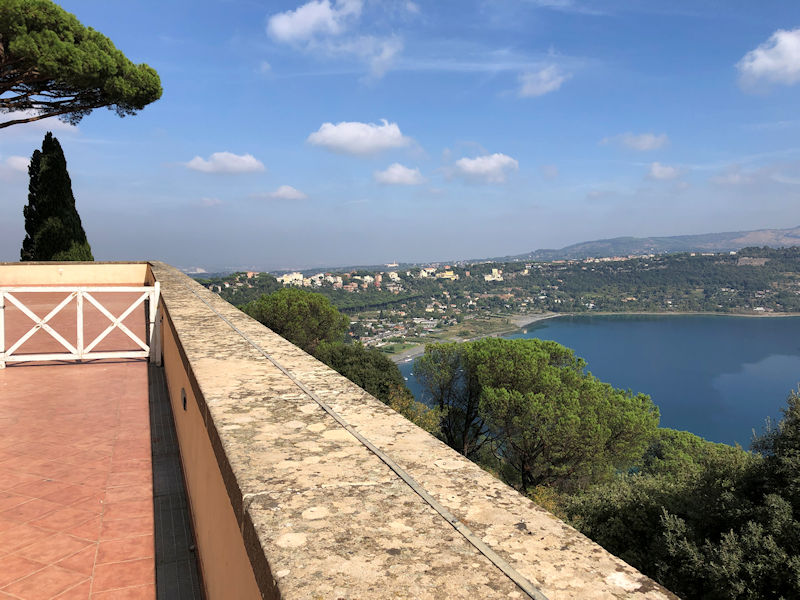
And back down at the lake
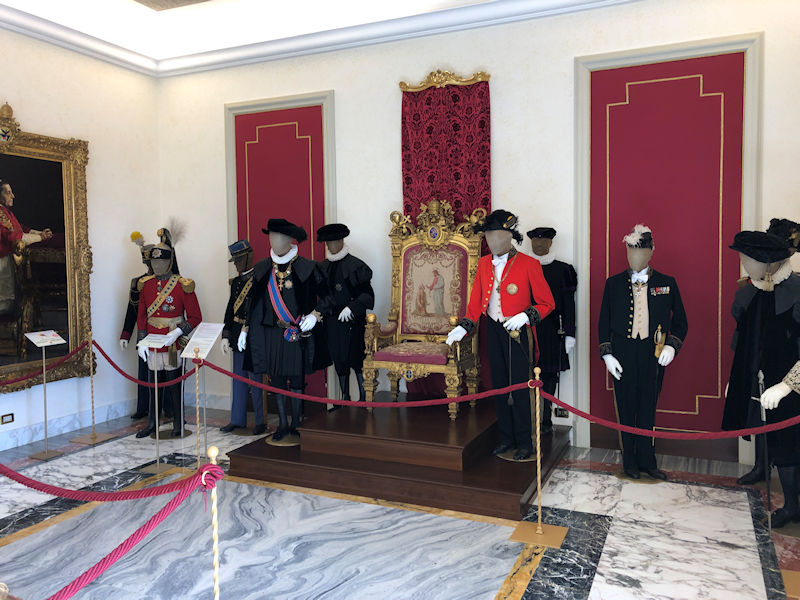
Fancy dress
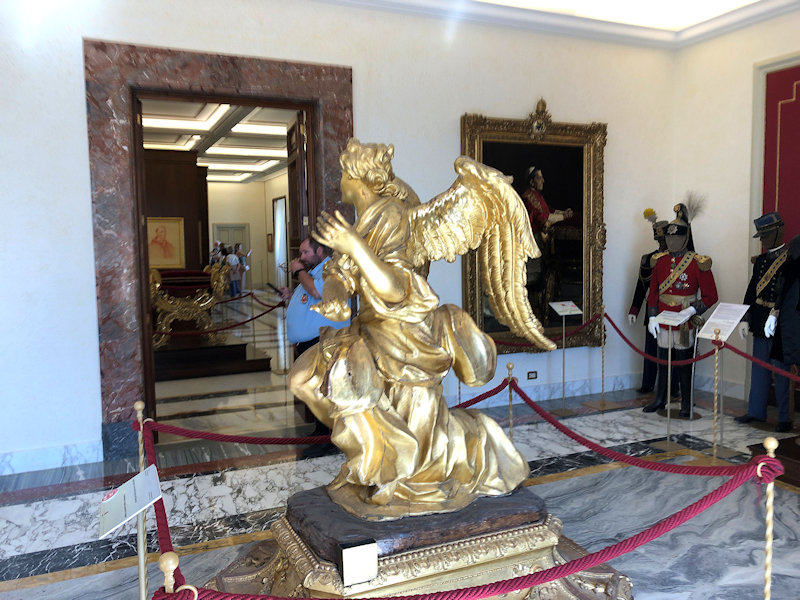
Good grief
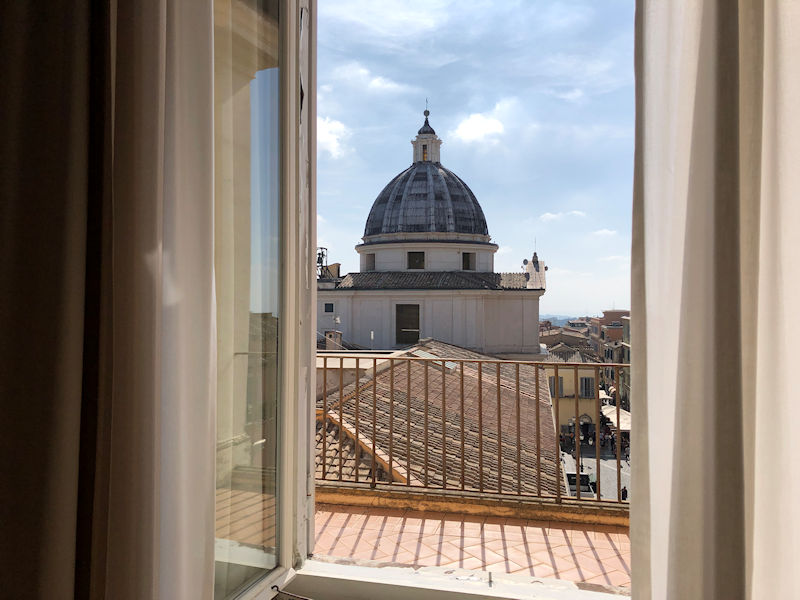
That's a view of the dome of the St Thomas of Villanova church overlooking the main piazza
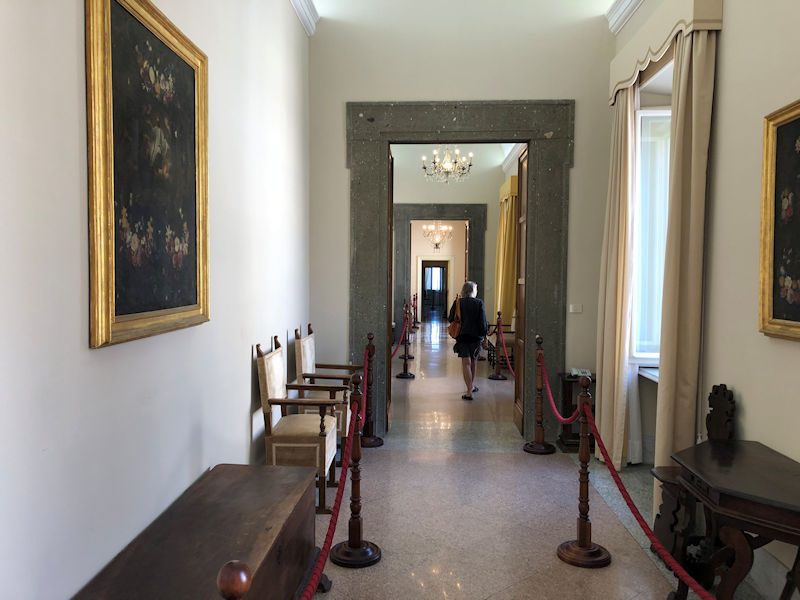
Interminable hallways
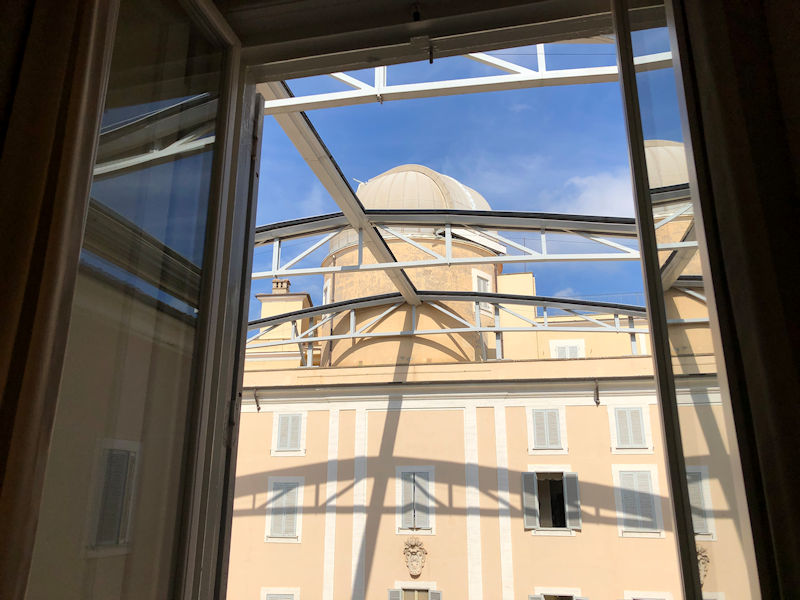
This is one of the two astronomical observatories across the central courtyard; built in 1930 and in use into the 1980s. Presently, however, 'the Vatican Observatory Research Group (VORG) is hosted by Steward Observatory at the University of Arizona, Tucson, United States. The telescopes are located in [sic] Mt. Graham, Arizona' (Wikipedia).
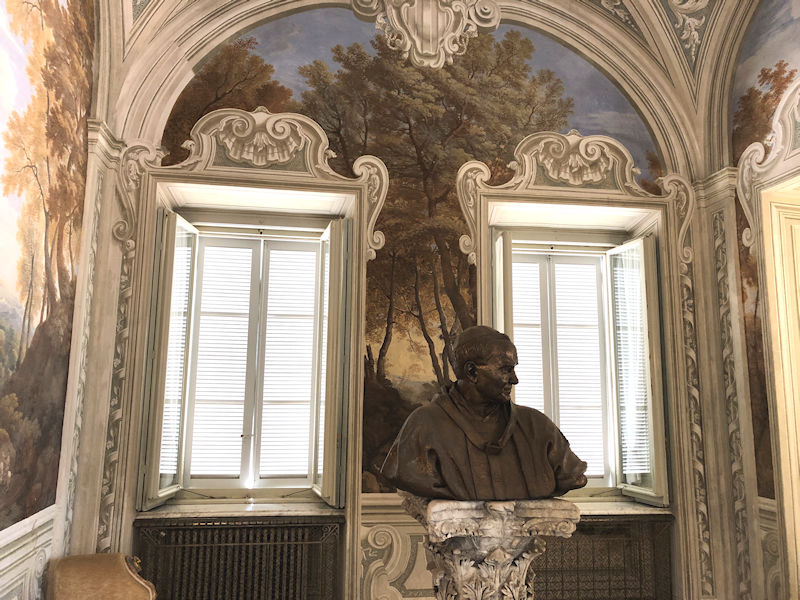
The stuccowork is pretty interesting.
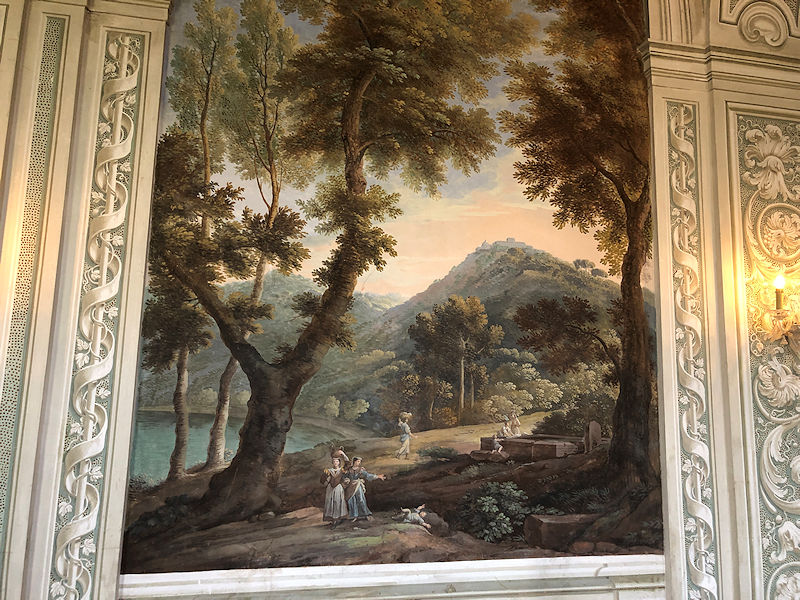
Here's something to admire at last -- could that be Lake Albano's crater rim in, say, the 18th century?
(Catch that little kid!)
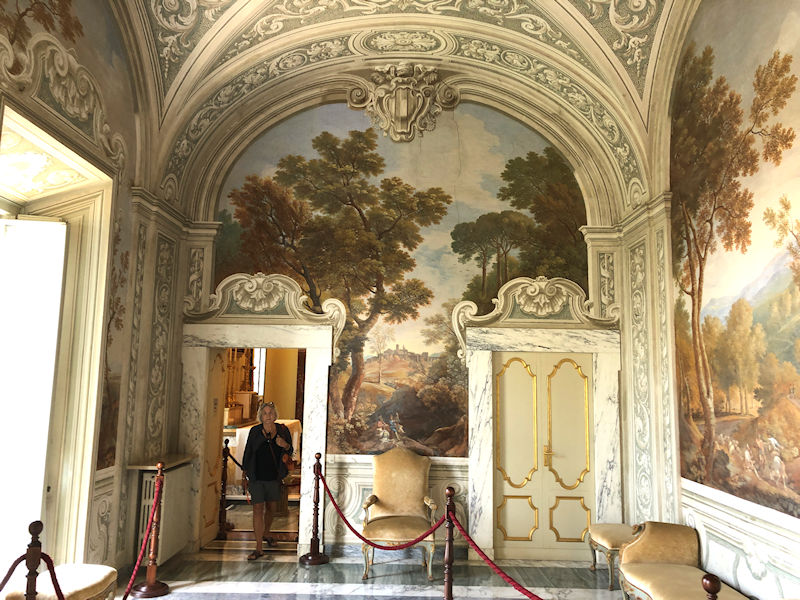
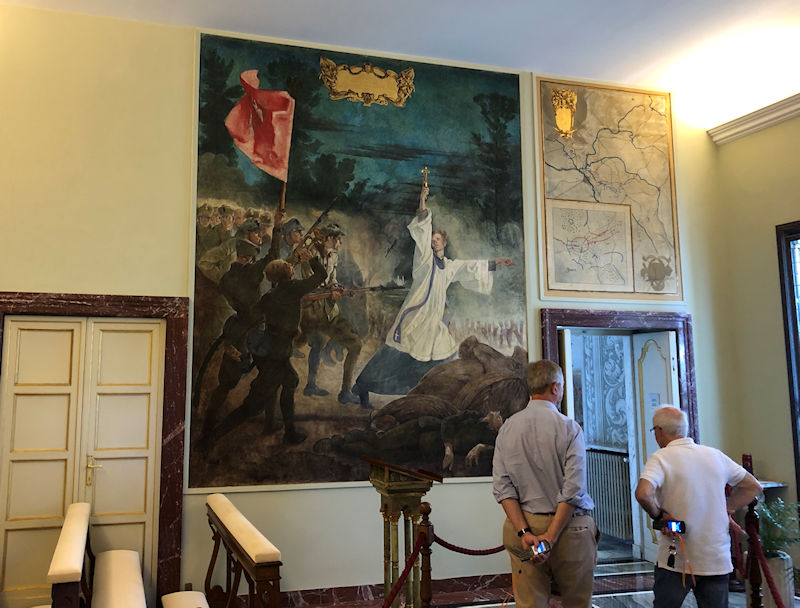
The Church Militant, apparently
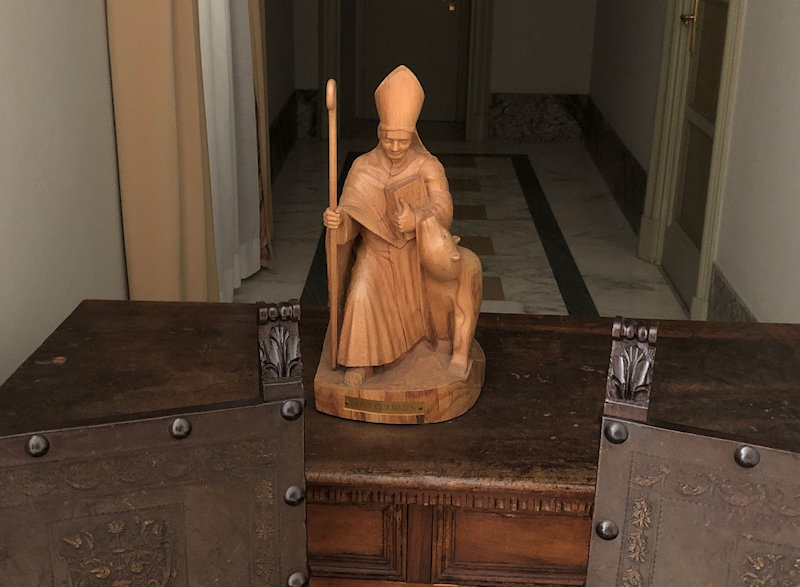
The Bishop with the pet bear (another miracle?)
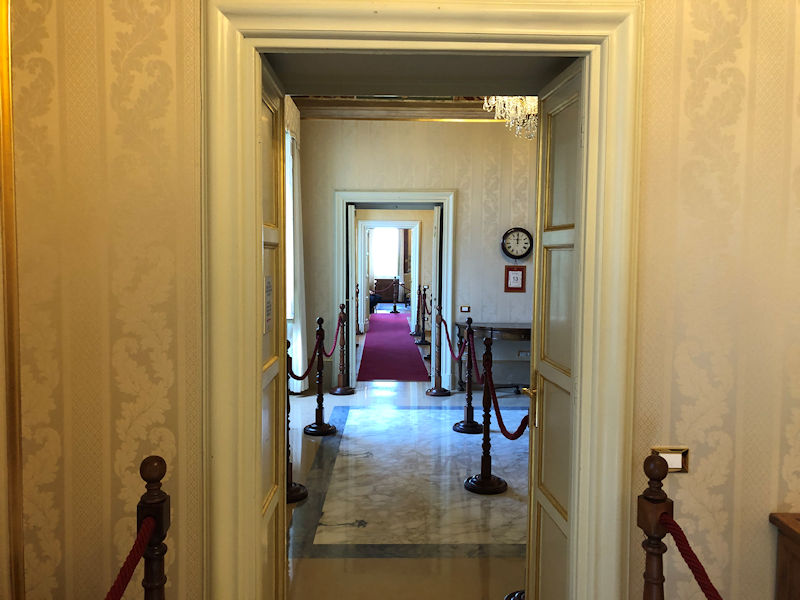
Oh, man.
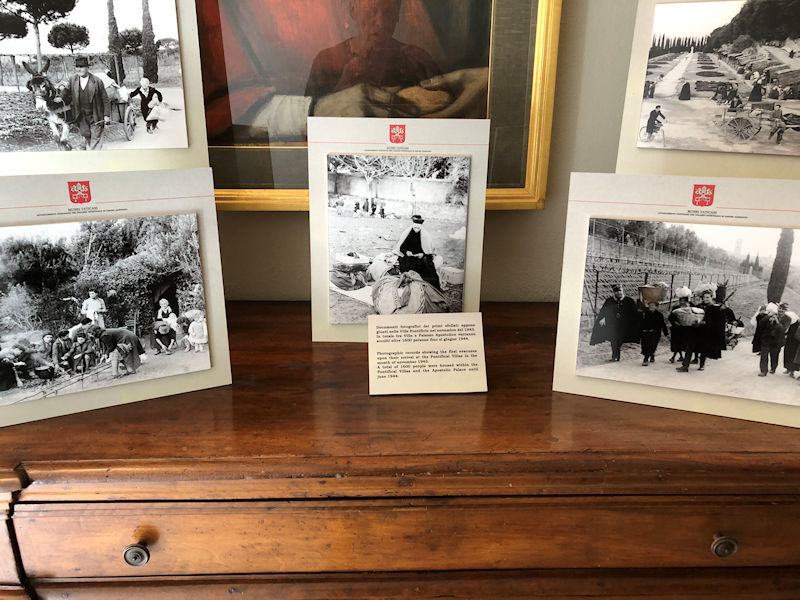
This is a small exhibition about how (we're told) Pope Pius XII opened the palace grounds here to refugees from the bloodshed in Rome -- in November 1943 the first evacuees arrived, including 'many Roman Jews and other non-Catholics'. 'A total of 1600 people were housed within the Pontifical Villas and the Apostolic Palace until June 1944.' [Wikipedia mentions 12,000 evacuees (!) in all, 'some bringing with them their cows, horses, mules and sheep'.]
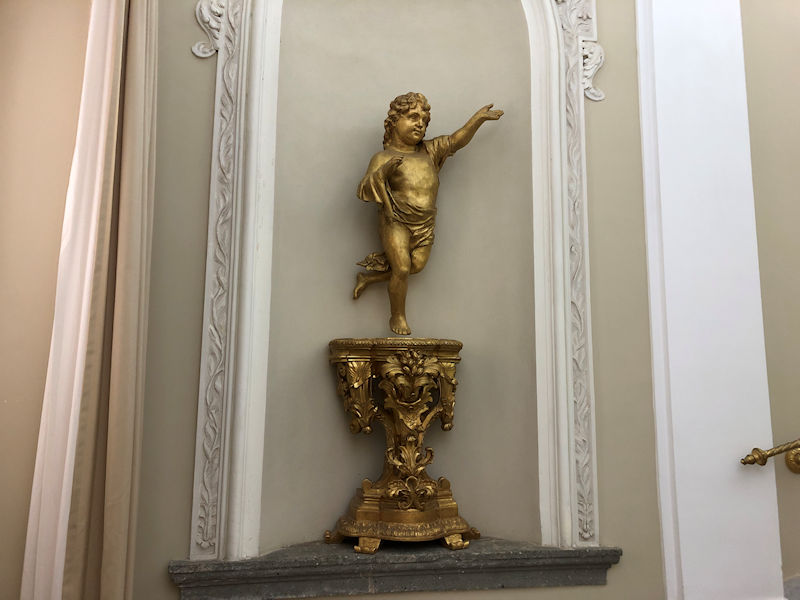
More chubby half-clothed little boys oh my
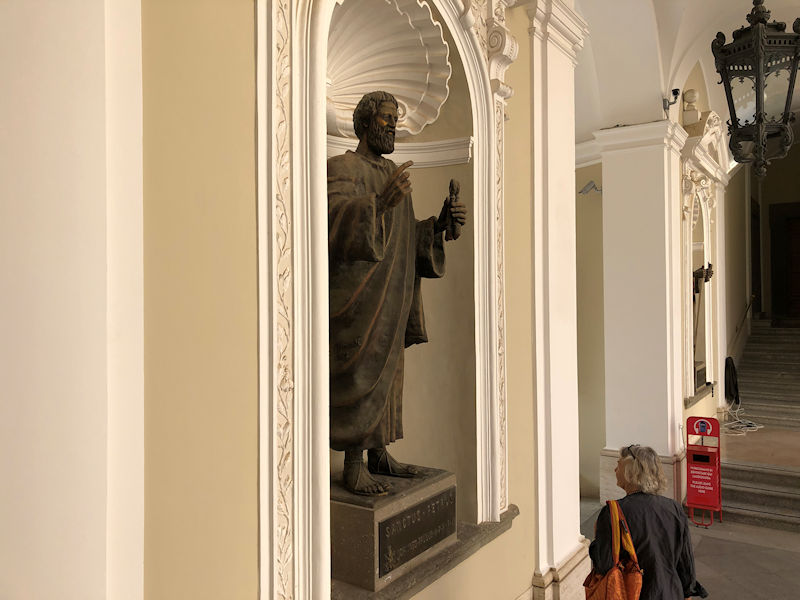
-- Don't just take my word for it!
-- Okay. I won't.
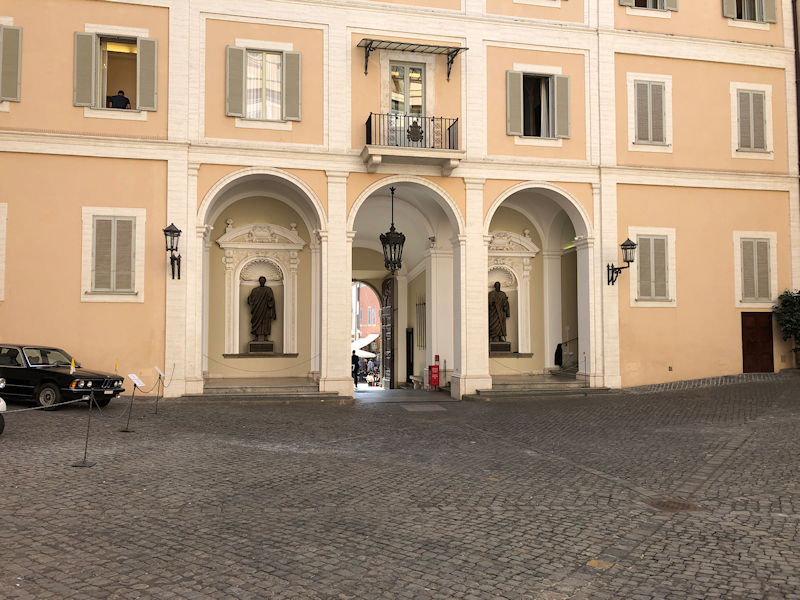
It's nearly time for our garden tour -- we're encouraged to cool our heels in the palace courtyard as the other participants wander this way. In the meantime, we can . . .
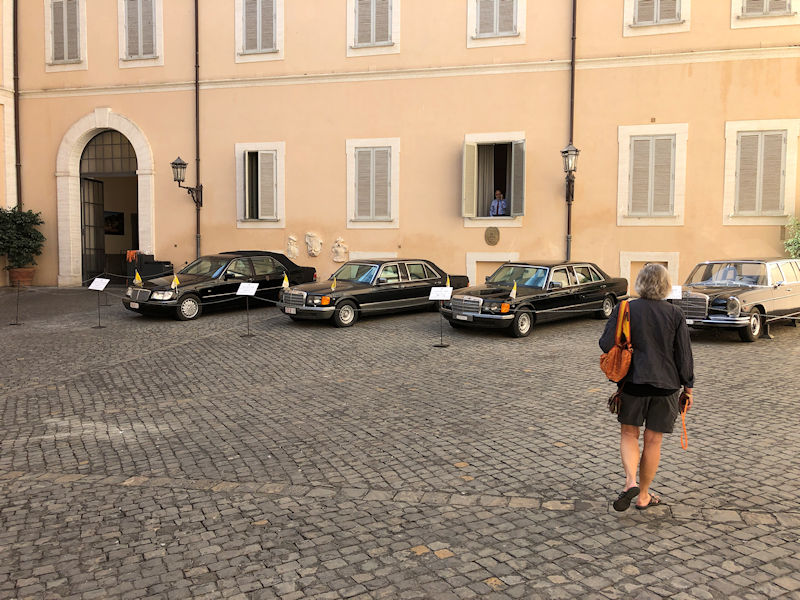
. . . admire a long line of papal vehicles, with little flags on, and . . .
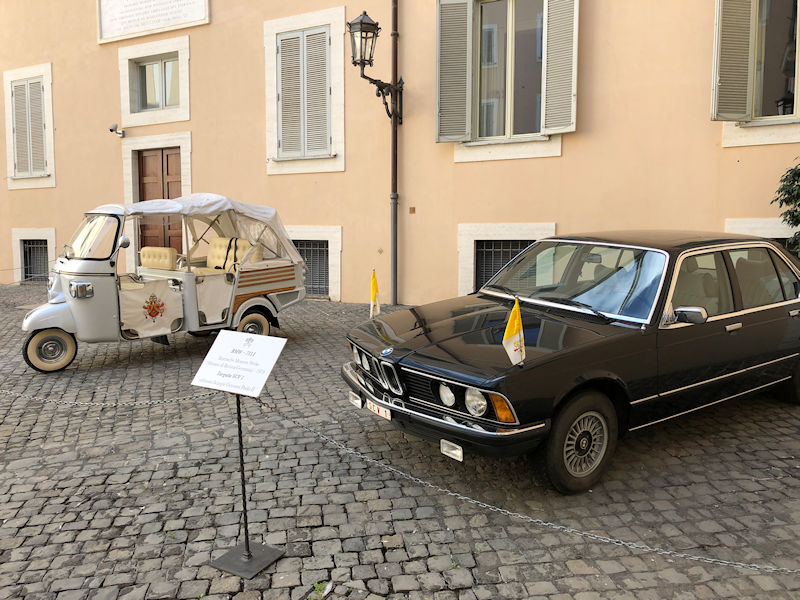
. . . one papal golf cart.
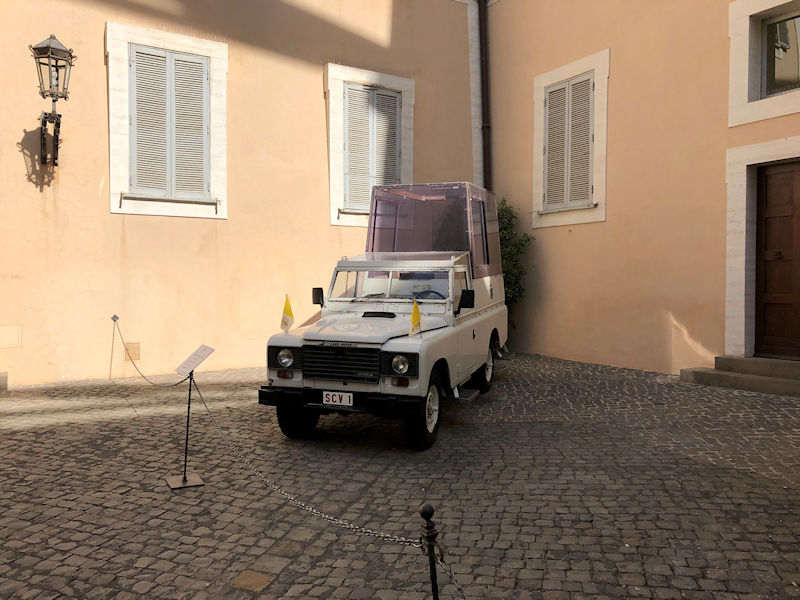
But this is the classic one, surely!
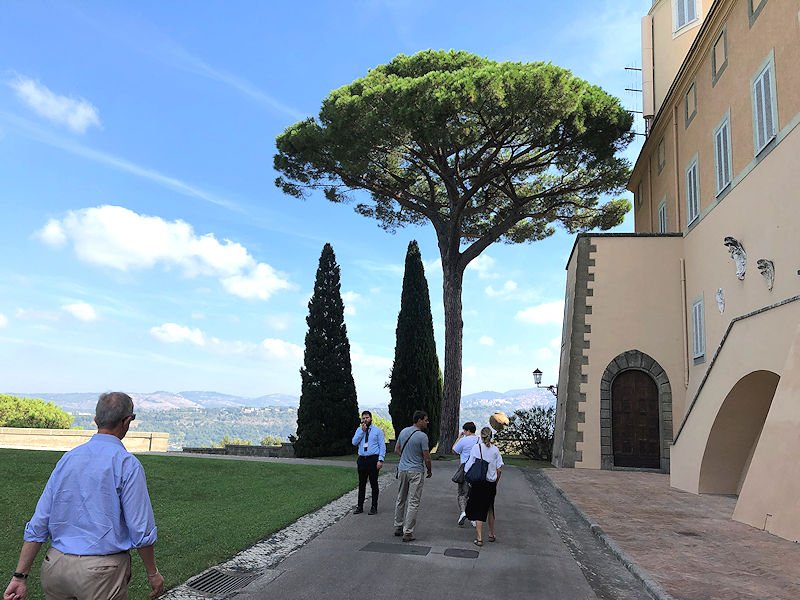
The Garden Party begins to assemble out the back of the palace, as seen in that Google Maps picture above.
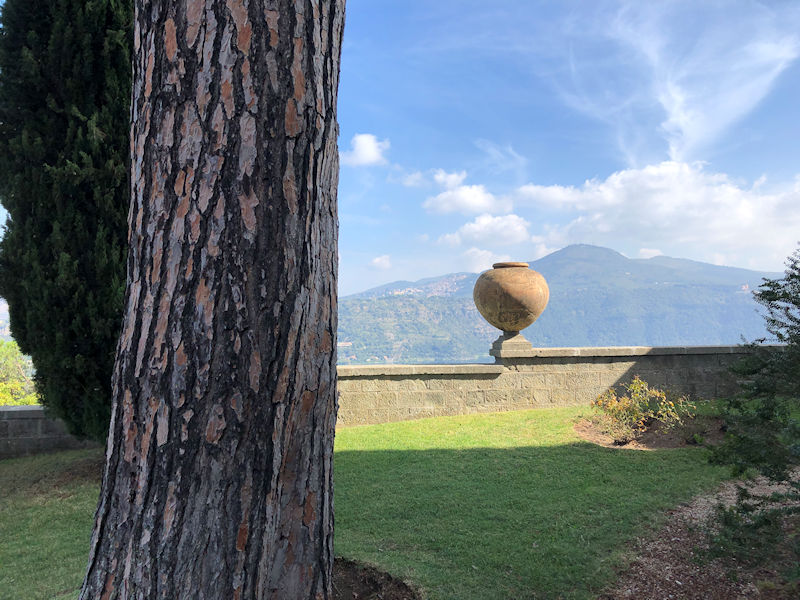
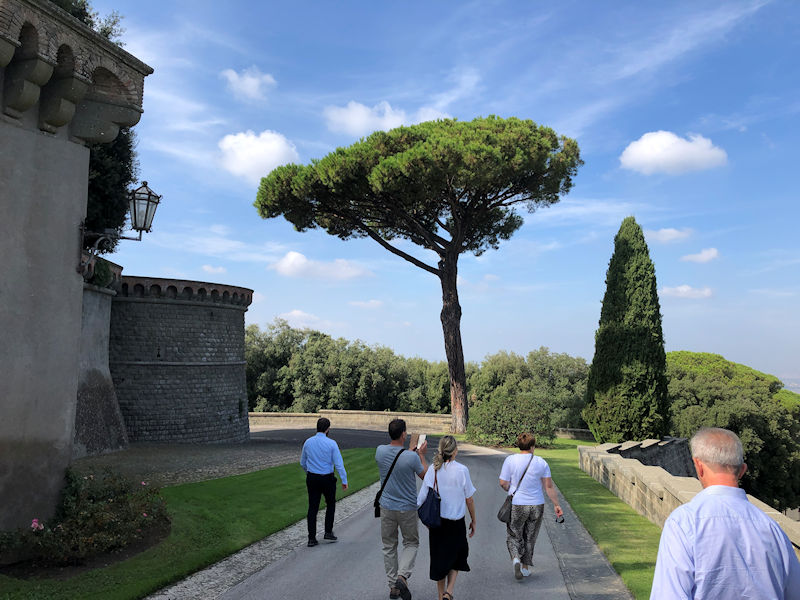
Our (very lengthy, as it turns out) walking tour circles round the near end and trudges past . . .
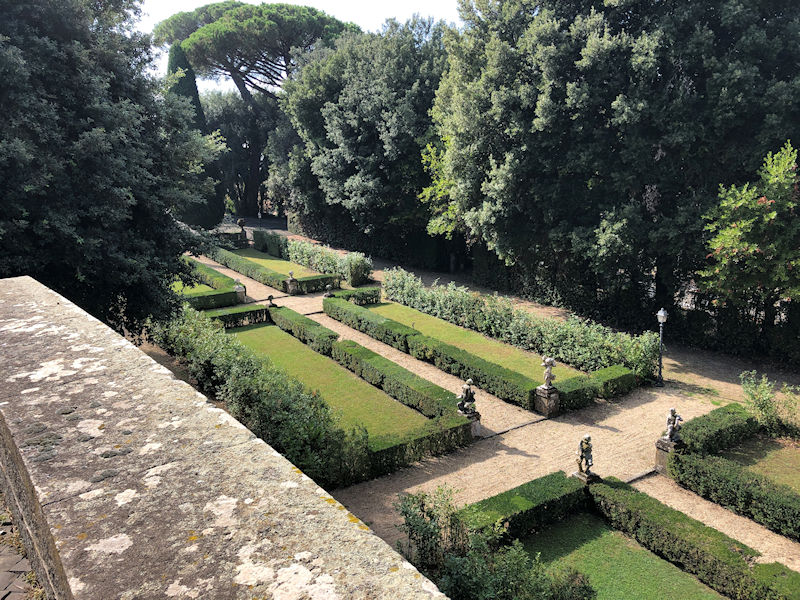
. . . this little warm-up layout, nothing like the grand sights awaiting us. A kilometre or so farther on.
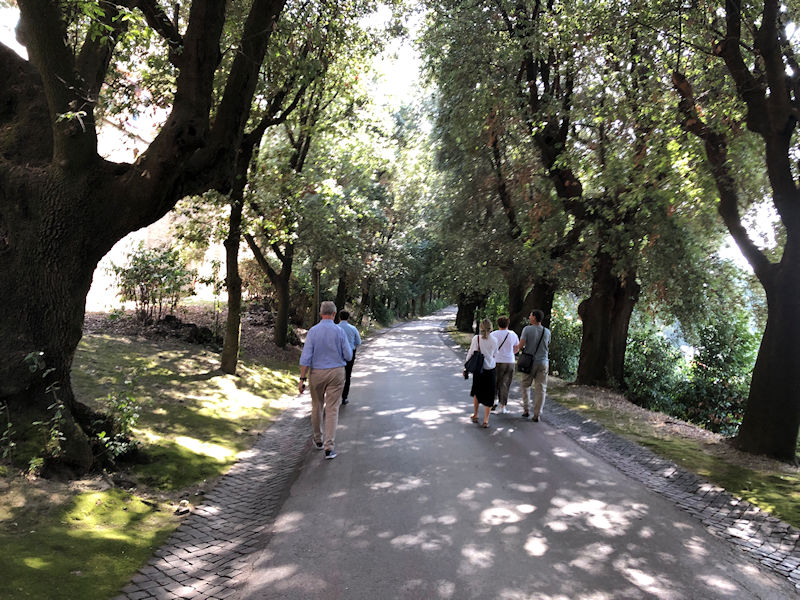
Plodding along, looking all about for flowers and what not, or at least . . .
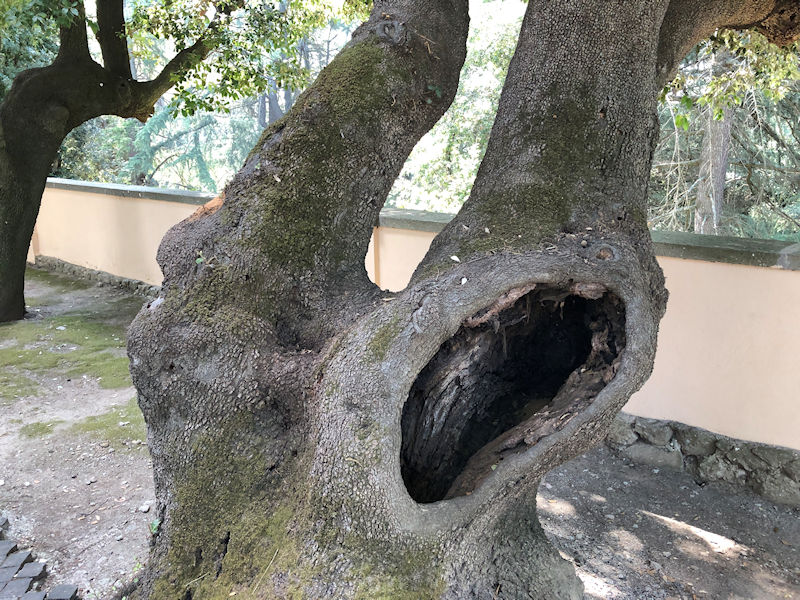
. . . a lot of badly scarred very old trees along the way.
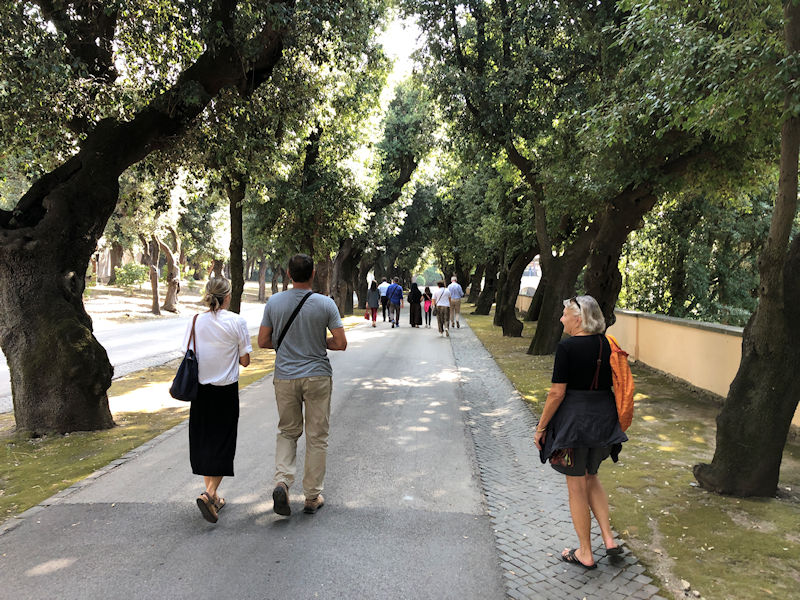
Stragglers
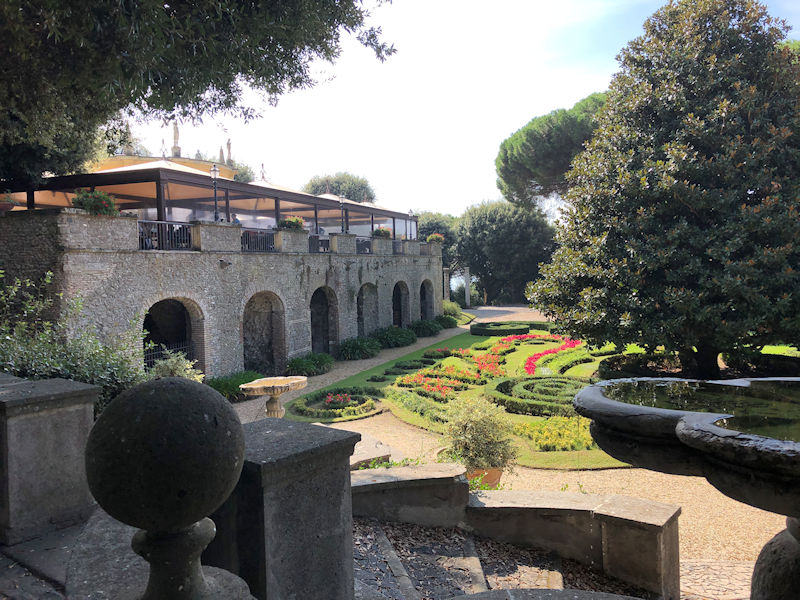
Things are looking up now.
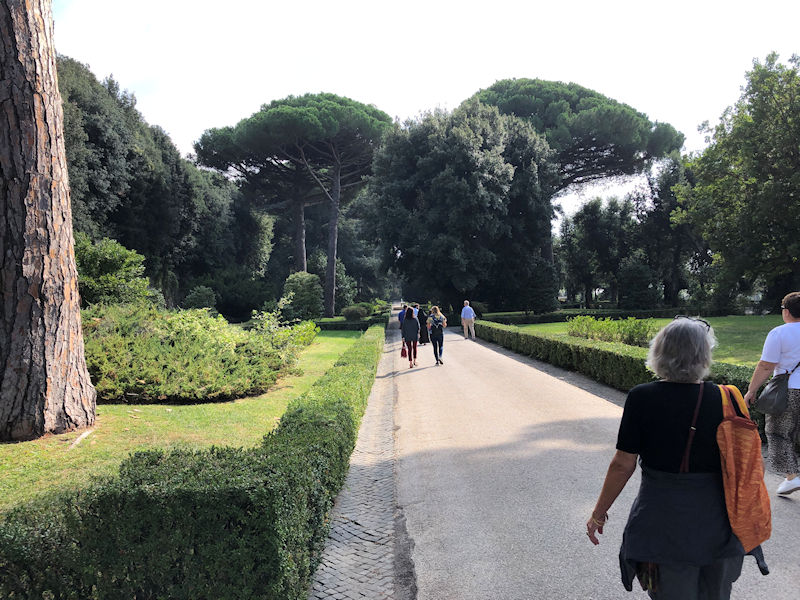
Our group is getting a little more strung out now; we'll regroup shortly. We're actually walking along the recovered remains of Domitian's Villa, stretching all along here for half a kilometre on one of the three terraces that made up the original establishment.
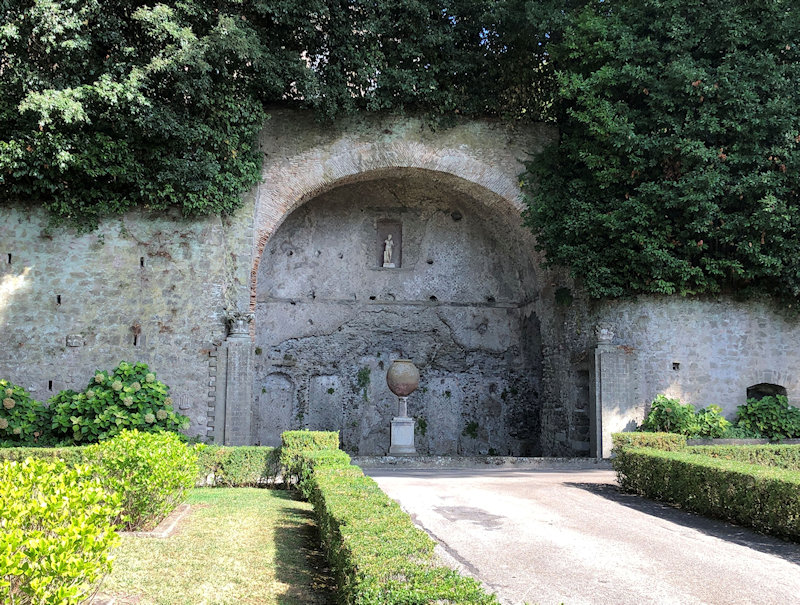
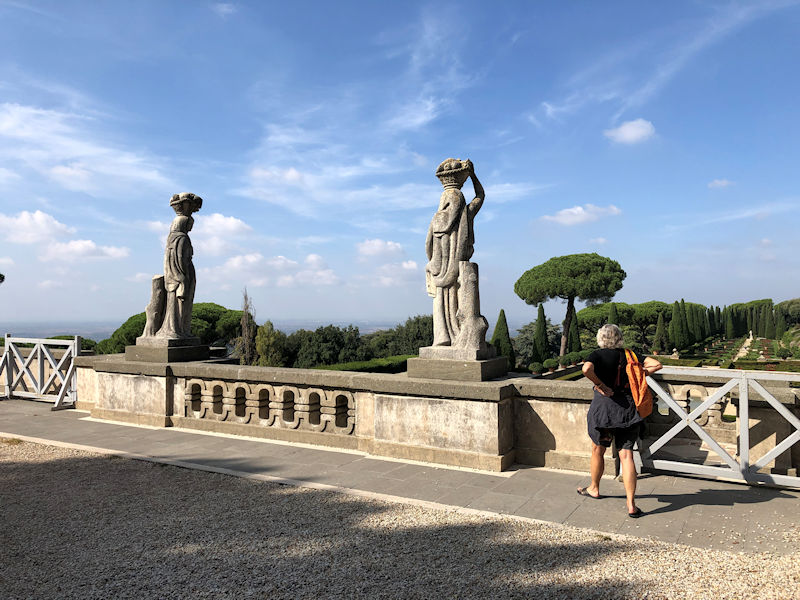
We're down at the 'Belvedere' at the far end of the Giardini di Villa Barberini.
Pope Urban's nephew, Taddeo Barberini, bought what became the 'Villa Barberini' in 1631 from one of the Viscontis, the grounds of which include much of Domitian's remaining overgrown ruins. It was purchased by the Holy See at the time of the 1929 Lateran Treaty and added to the extraterritorial Vatican City State. The Villa Barberini building itself is presently the headquarters of the College of Propaganda Fide nearby.
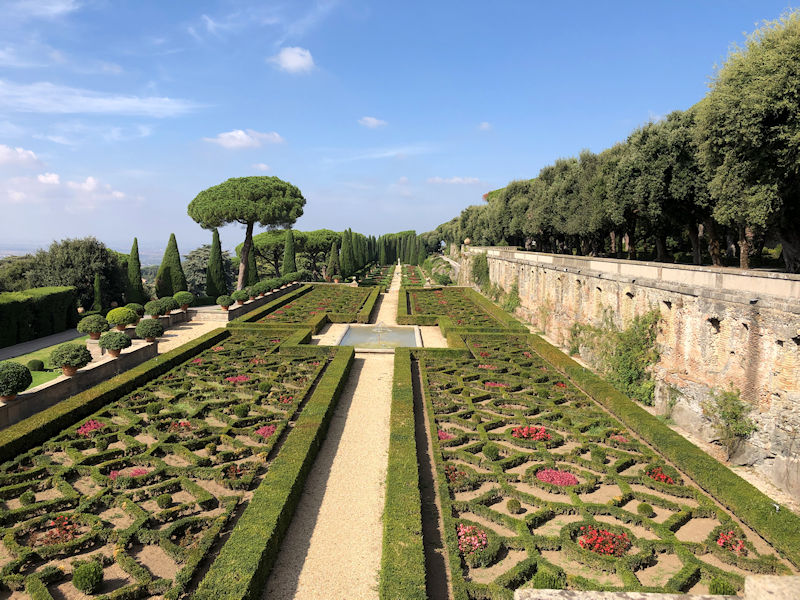
Oh wow. That's over 300 metres of heavy-duty gardening work. The wall alongside it is Domitian's 'Cryptoporticus', a semi-subterranean gallery or covered corridor or passageway, the interior vaulting of which supports portico structures above. They're often lit by openings at the top of the arches.
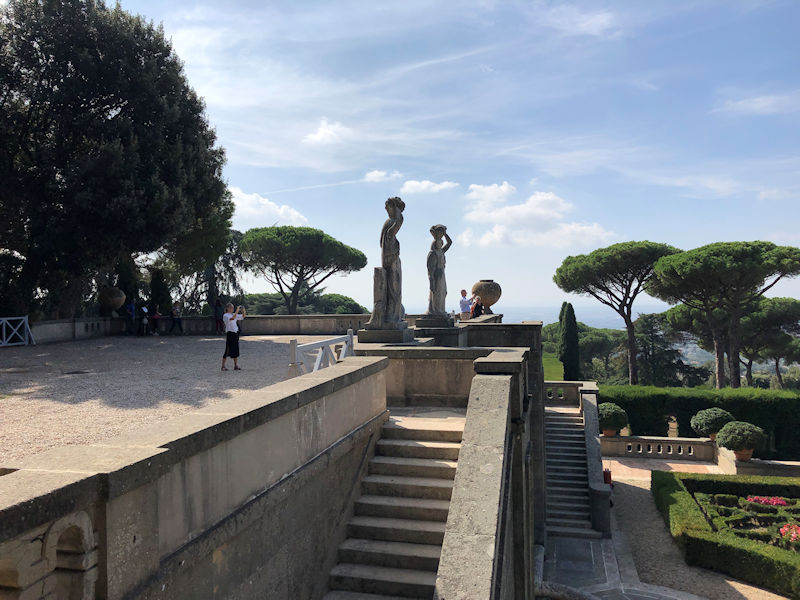
We've been given 10 minutes to take leisurely photos from the Belvedere and generally rest up for what's still to come.
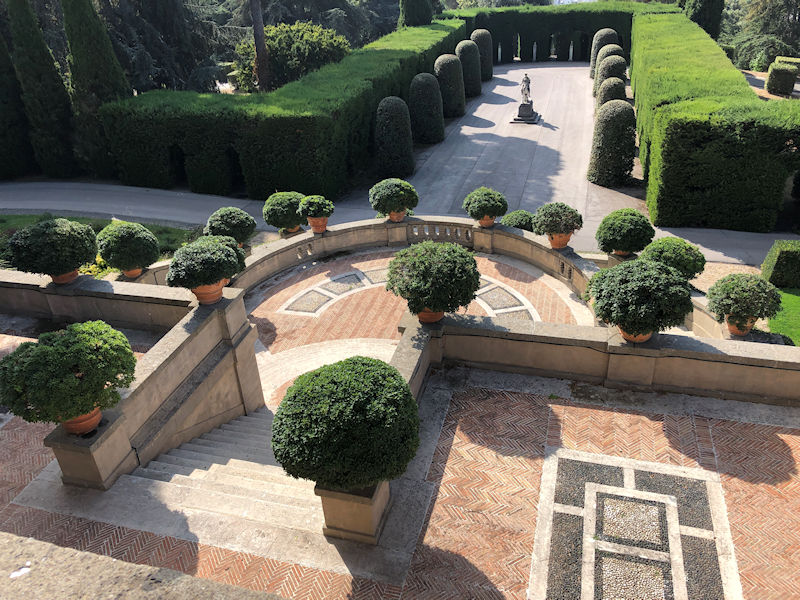
This is looking down off the side of the Belvedere platform at what seems to be called the 'Fontana di Villa Altieri' (unless that's a misplaced caption on the Google Map). We didn't catch the name of the statue guy.
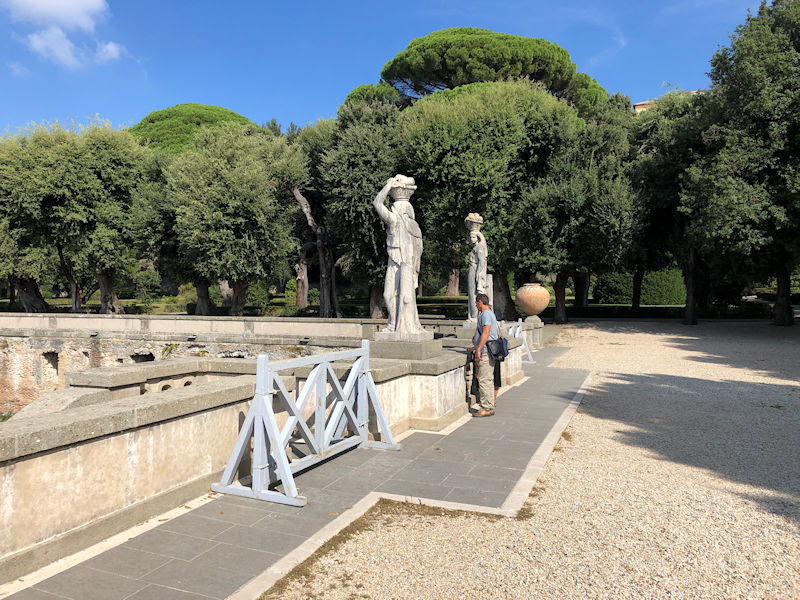
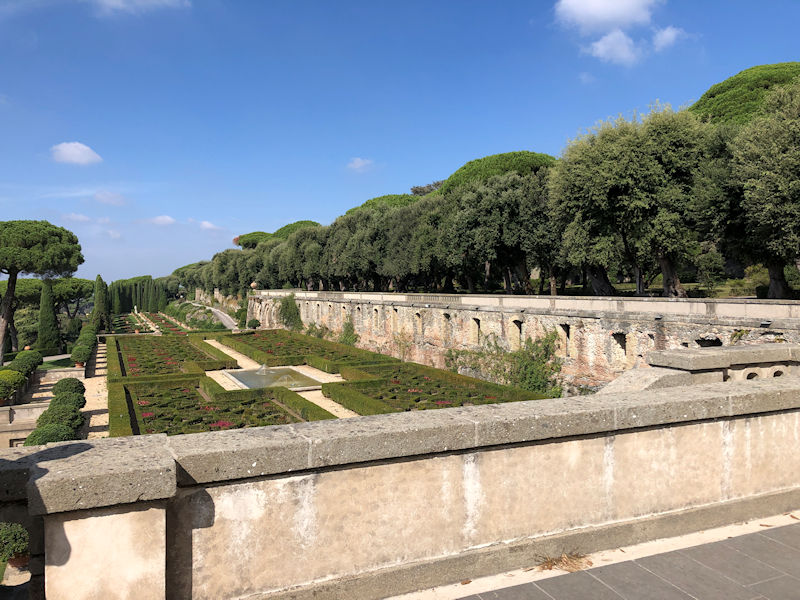
Our ten minutes' respite is almost up.
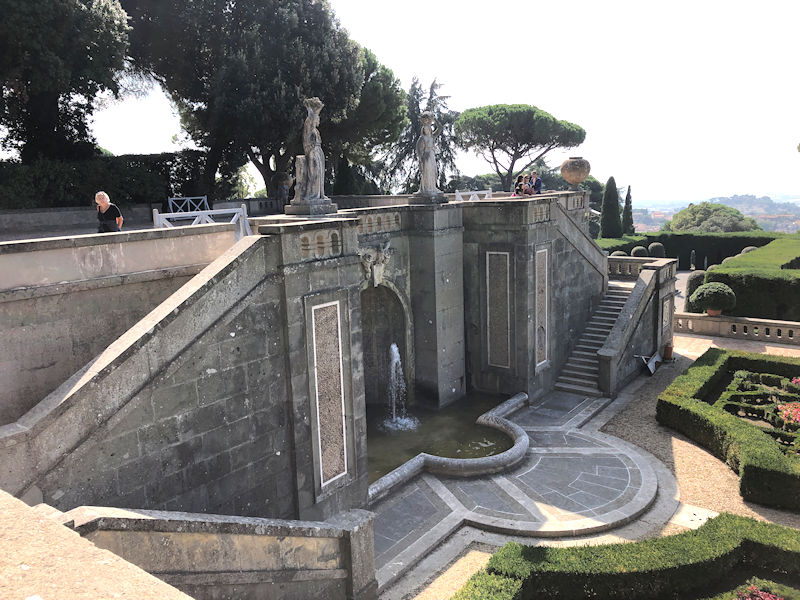
So we're off again.
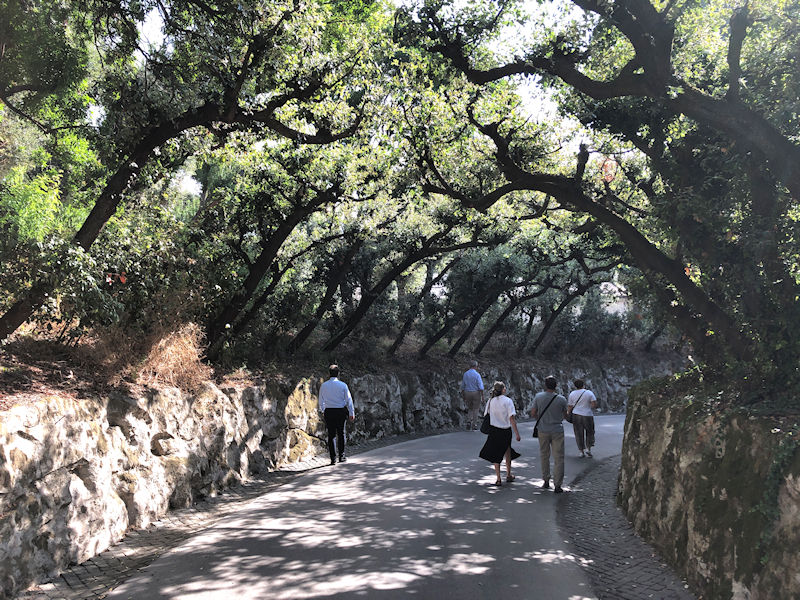
Around and down another level, it seems.
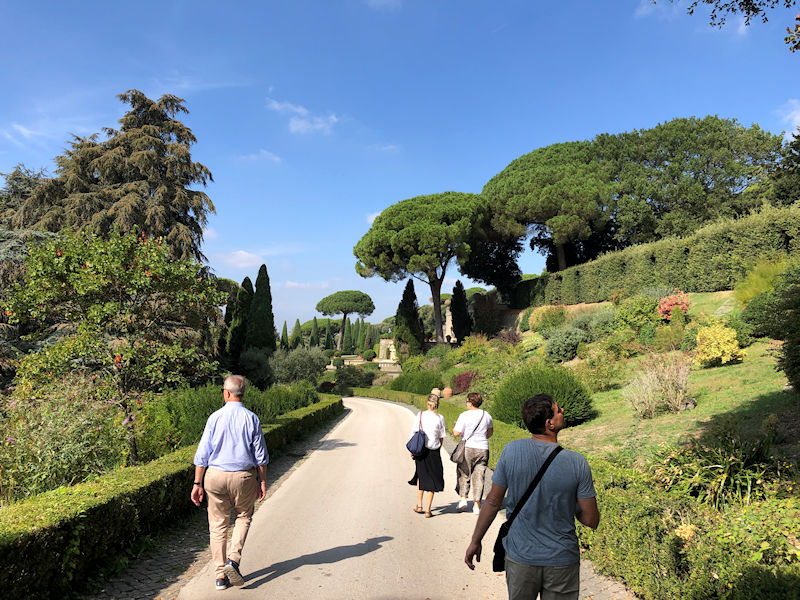
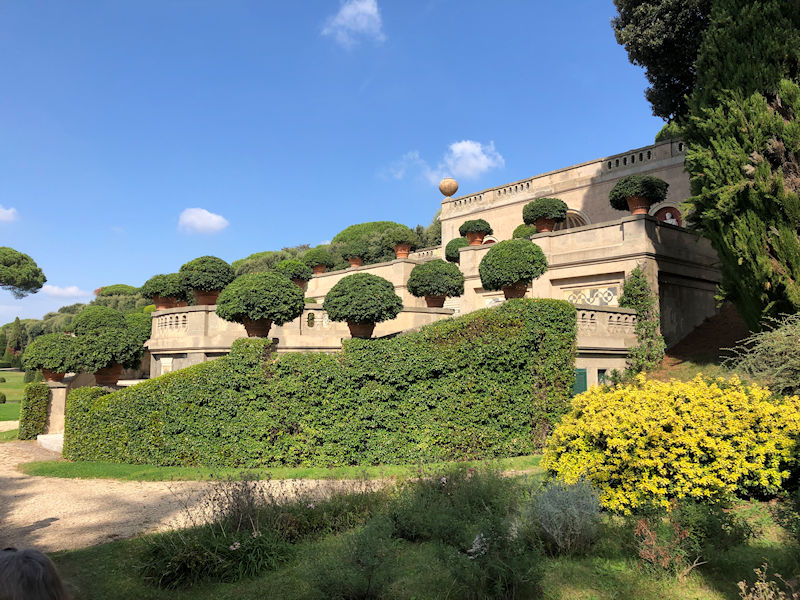
We're fetching up below the Belvedere now, by this soi-disant 'Fontana di Villa Altieri'.
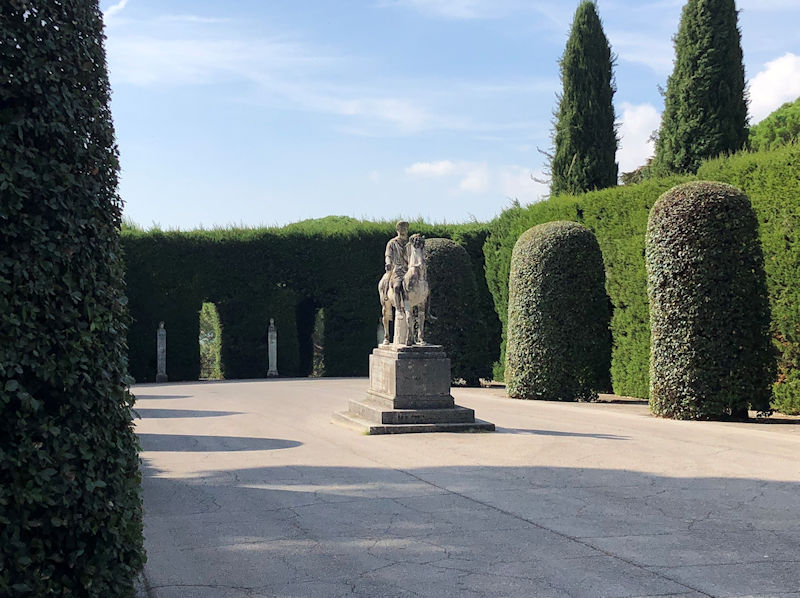
There's our anonymous equestrian again (somebody must know who that is, or was)
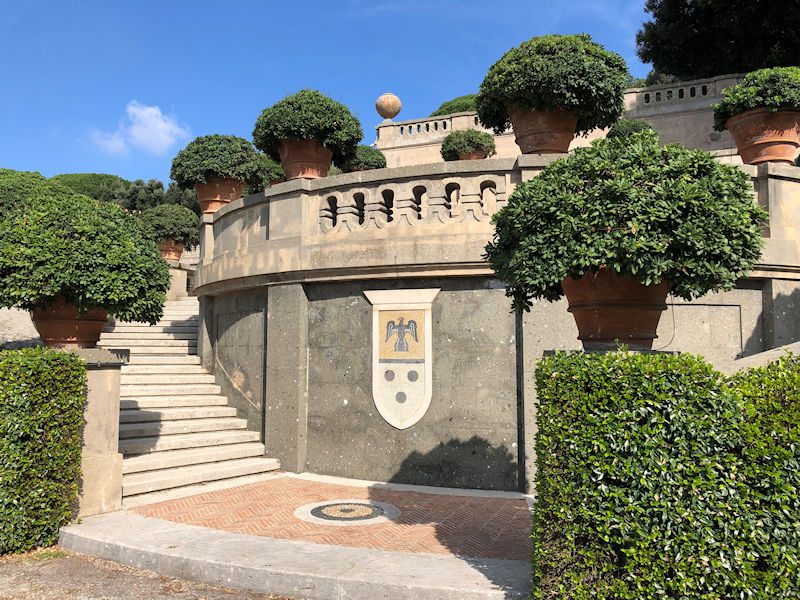
Below the Belvedere, and continuing . . .
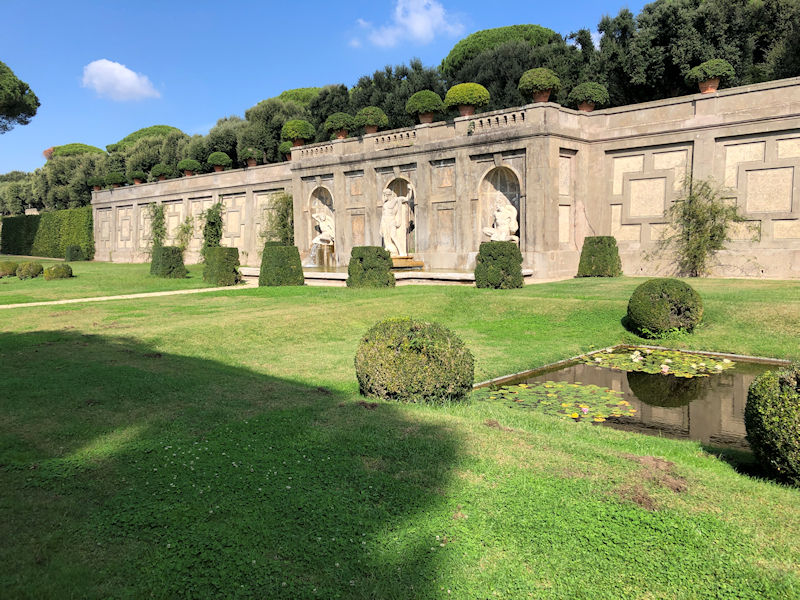
. . . along the path one level down.
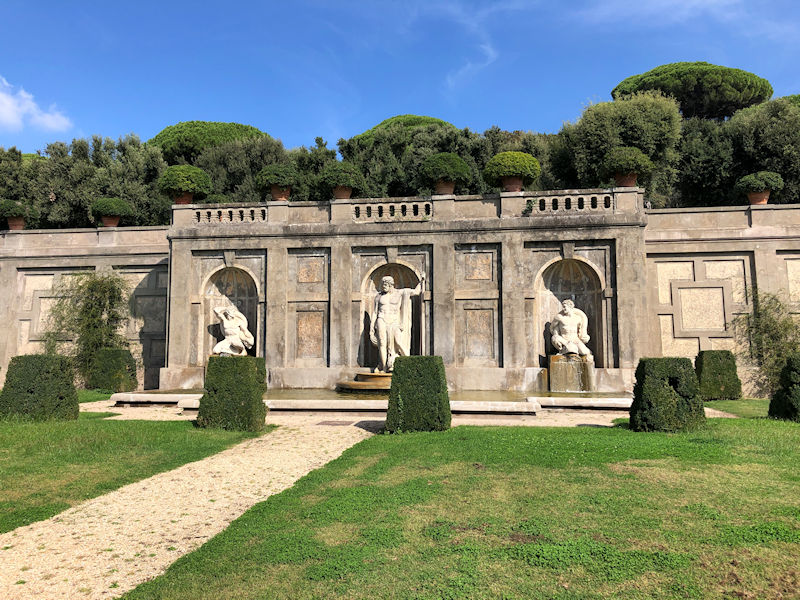
All of these works were evidently grown entirely over with vegetation -- 'The most striking views of the ruins overgrown by vegetation, such as the cryptoporticus and nymphaeum, were described by scholars and diarists from the 15th c. onwards and reproduced in engravings and paintings'. It was Pope Pius XI who, apparently in the 1930s, commissioned the cleaning up and incorporation of these parts into the papal properties here.
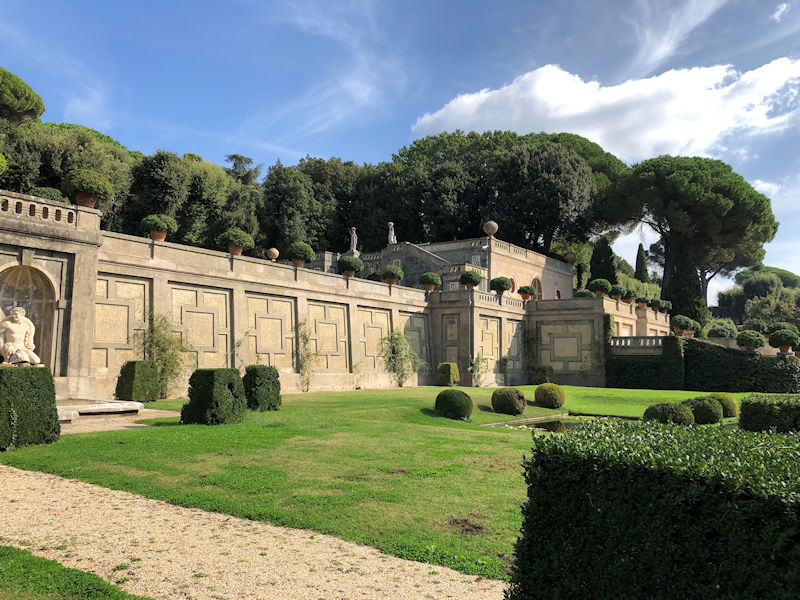
A glance back up at the Belvedere platform
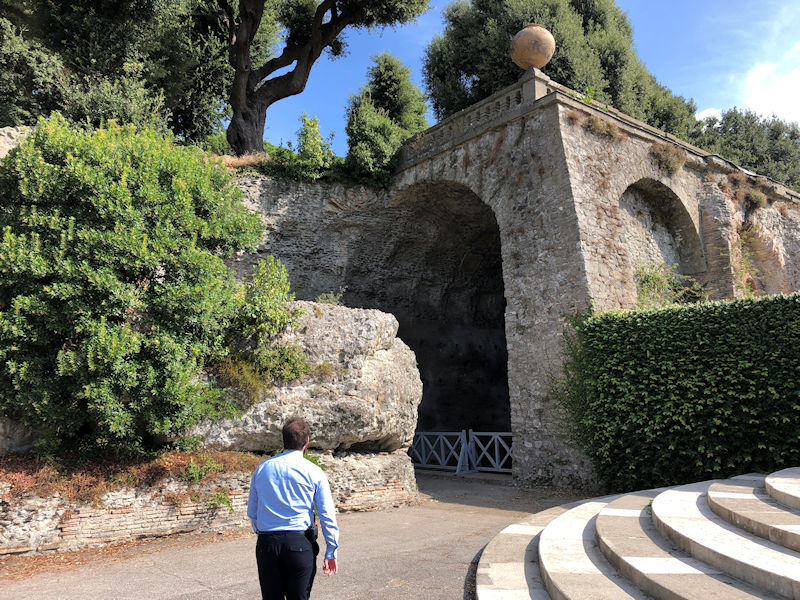
Now for a look into the Cryptoporticus, which apparently . . .
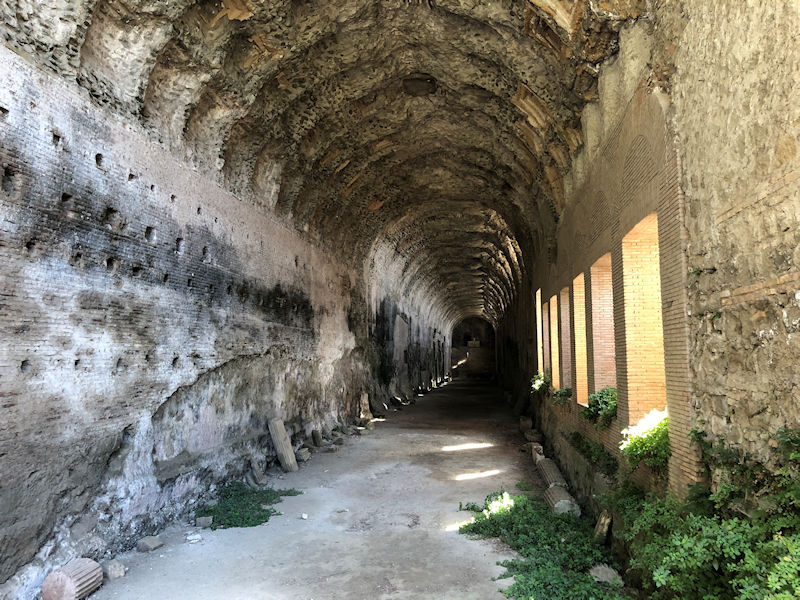
. . . if we understood the guide rightly, was damaged by an earthquake at some point and had to be entirely cleared out.
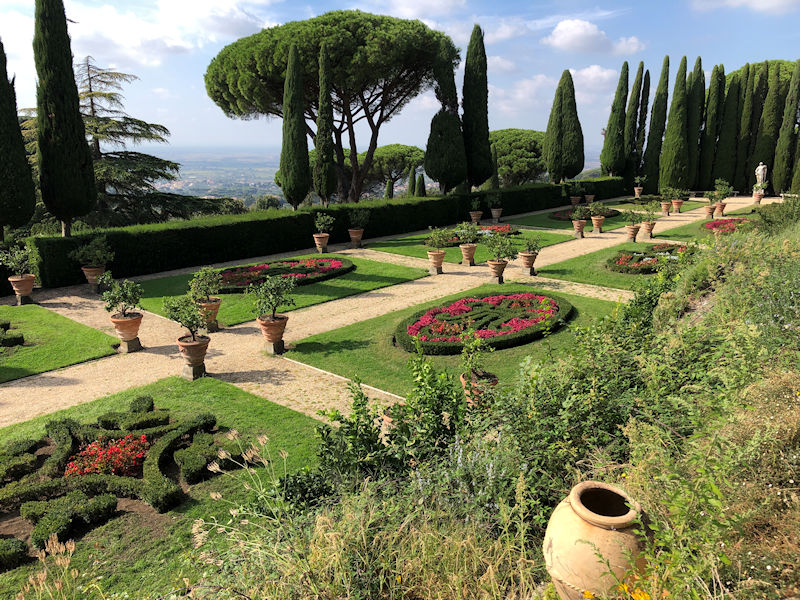
We're passing along the amazing gardens on our casual way back to the borgo near the Papal Palace.
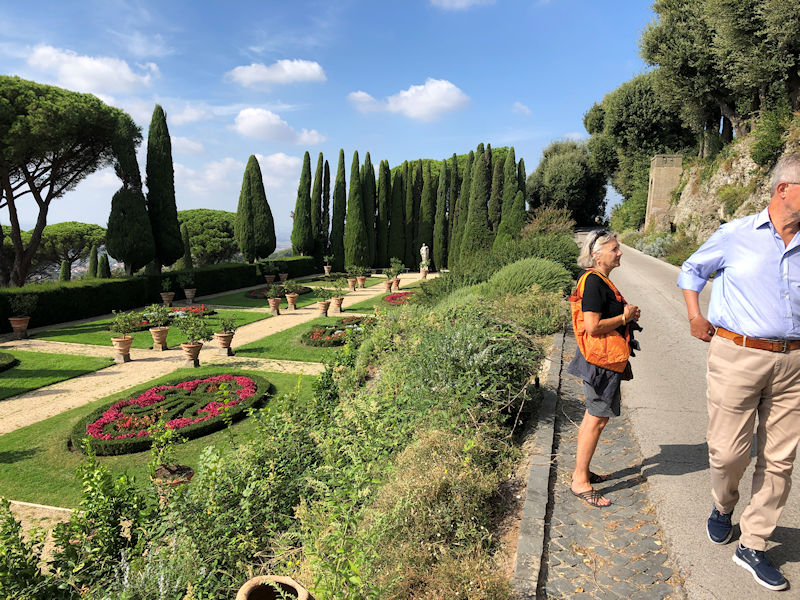
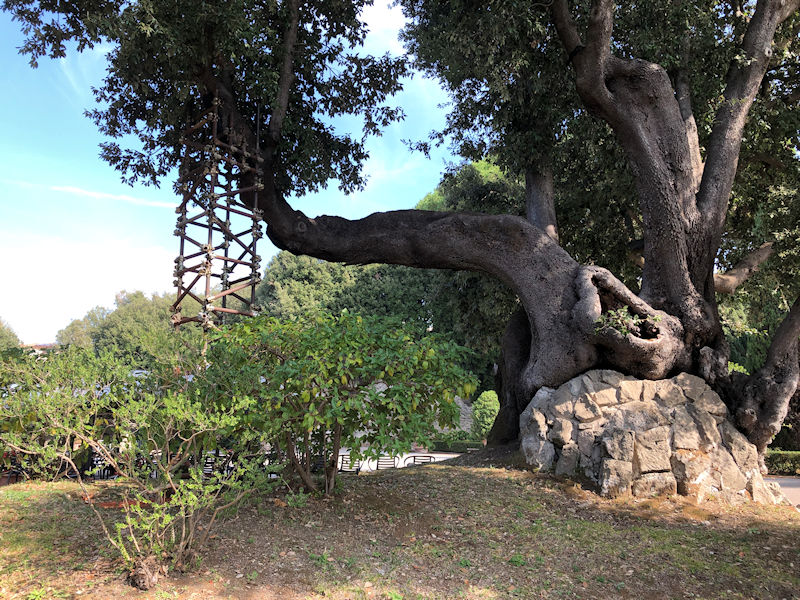
That, we're told, is a 400 year old tree that is presently feeling unwell.
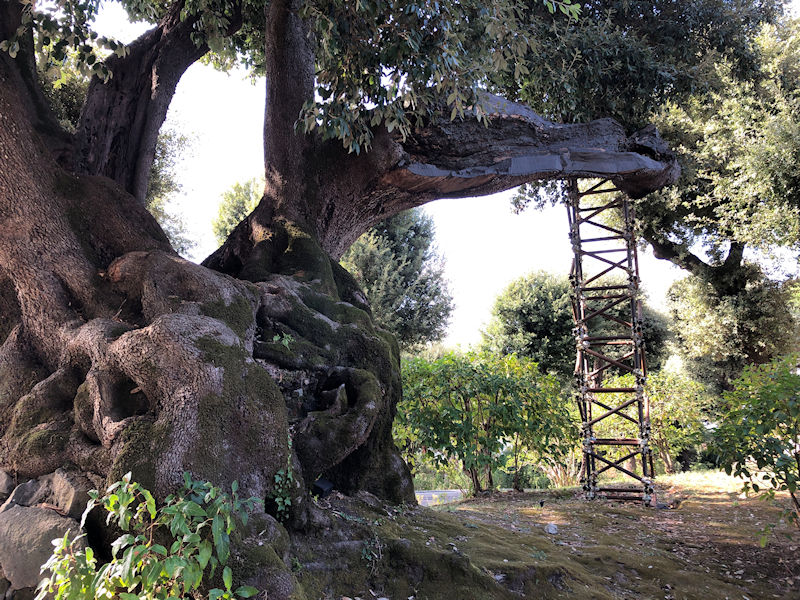
One of its limbs has partially broken off and requires remedial assistance.
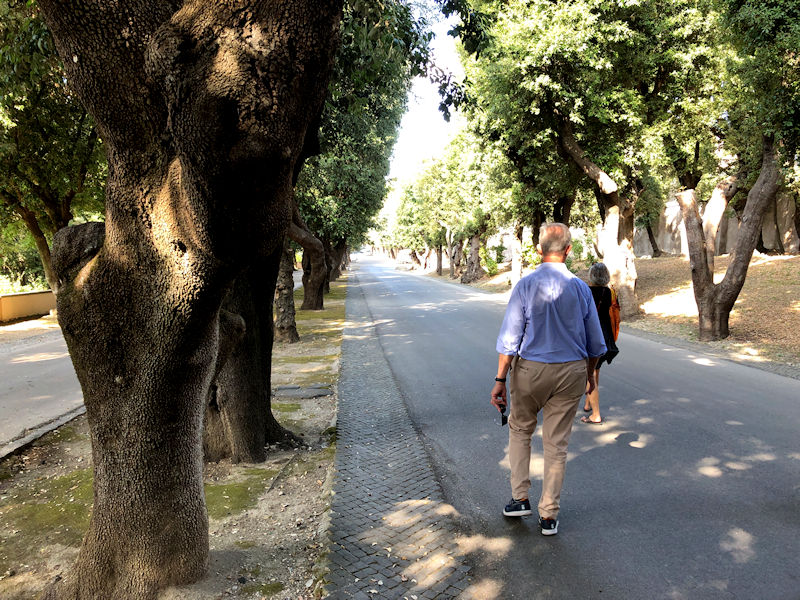
Back out of the precincts towards the public road near the bottom of the borgo, to which . . .
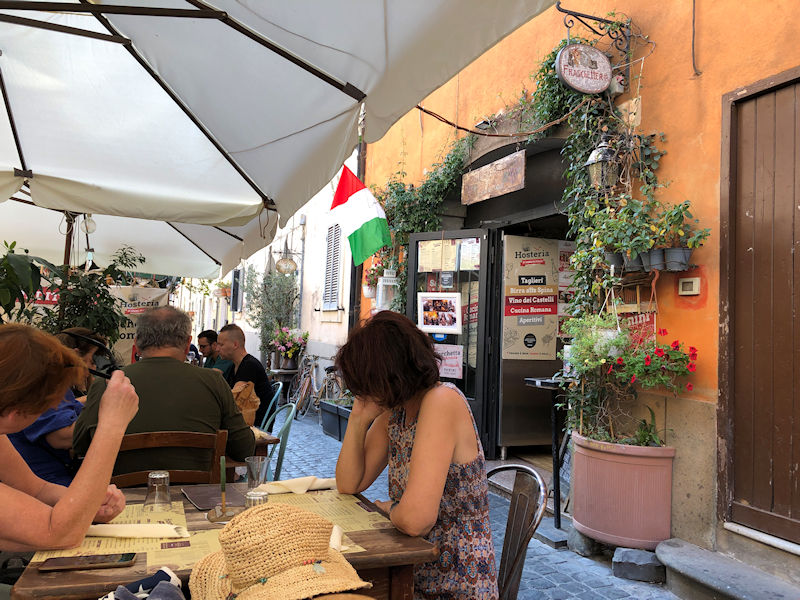
. . . we now proceed for lunch at one of the several bistros and trattorie spilled out into the street.
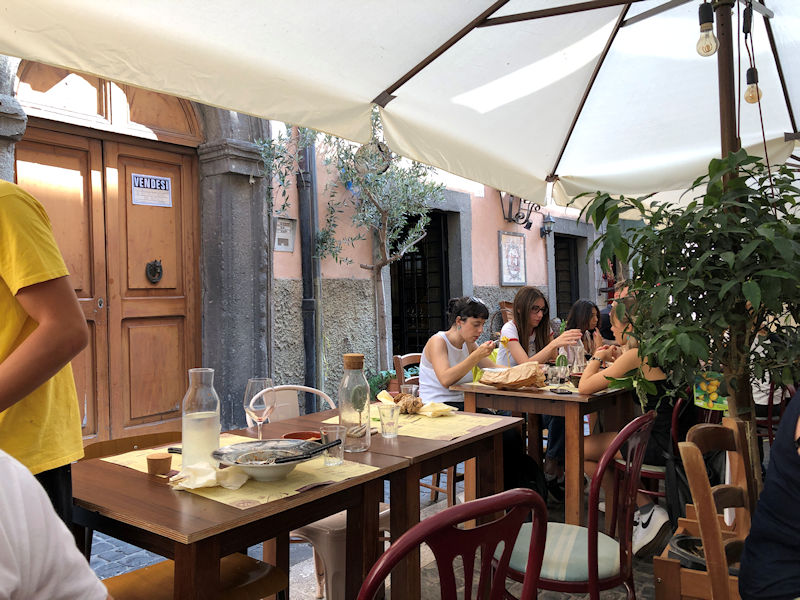
This one is called the Hosteria La Fraschetta di Padre in Figlio (okay but not great).
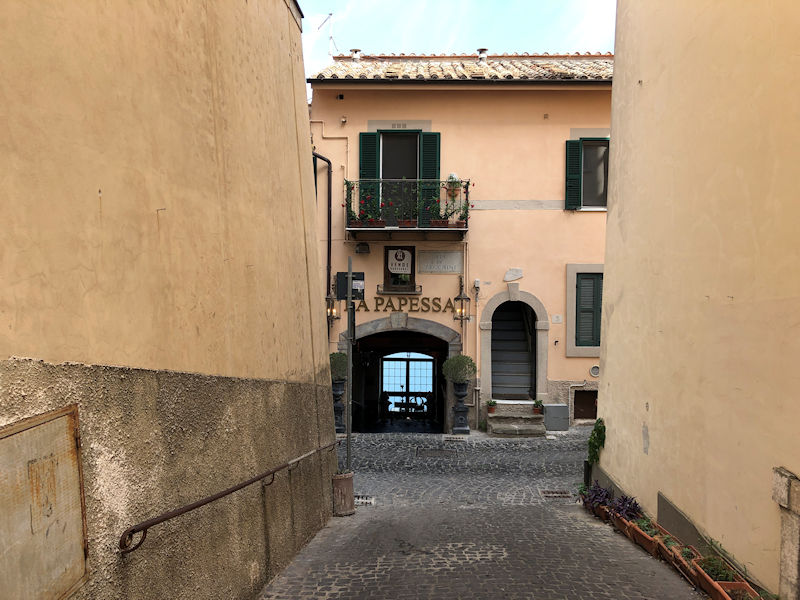
That, down a short side street to the other road through the borgo, has an interesting name, La Papessa, likely a nod to the medieval (and presumably mythical) Pope Joan in the 9th century -- dressed as a man, 2 years in office, lots of miracles in later years, etc. We'll try this one soon.
Next up: The Lago di Nemi and its village


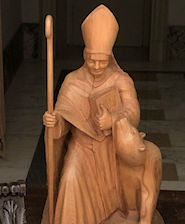 Dwight Peck's personal website
Dwight Peck's personal website













































































